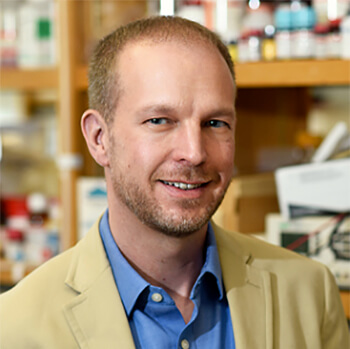
Trent
Watkins
PhD
Location
Houston, TX, USA
Current Organization
Baylor College of Medicine
Biography
The road to my current efforts to fight neurodegeneration has involved twists and turns. My first direct involvement in biomedical research career began at the University of North Texas Health Science Center during high school summer breaks, exploring the mechanisms of a DNA repair enzyme. Inspired by the complexities of biochemistry and the remarkable history of scientific breakthroughs in the San Francisco Bay Area, I traveled to Berkeley for undergraduate studies in Molecular and Cell Biology. There I trained in the laboratory of Lasker Award winner Daniel Koshland, Jr., working to develop new approaches for the treatment of Alzheimer’s disease and other dementias. Those efforts set me on the path to a career in Neuroscience. My next stop was graduate studies at Stanford University in the laboratory of Ben Barres, a pioneer in the biology of glia, the support cells that make up the majority of the brain. Though I envisioned a strictly academic career path, I was then enticed by the unique opportunities to pursue postdoctoral research in the laboratory of Marc Tessier-Lavigne at Genentech, Inc. Those studies led to a joint effort with Joe Lewcock to understand the surprising intersection between axon regeneration and neurodegeneration. Following that training, appointment as a Biomarkers Scientist in Early Development at Genentech introduced me to the important challenges of clinical trial design and execution. I am now privileged to incorporate these diverse experiences into my laboratory’s efforts at the Baylor College of Medicine to understand how intrinsic repair programs can help to define the fates of neurons in conditions ranging from glaucoma to spinal cord injury.



